Ever found your saw stuck mid-cut, turning a smooth job into a struggle? Discover how to prevent this annoyance with our top techniques. Ready to glide through your woodworking tasks? Let’s dive in!
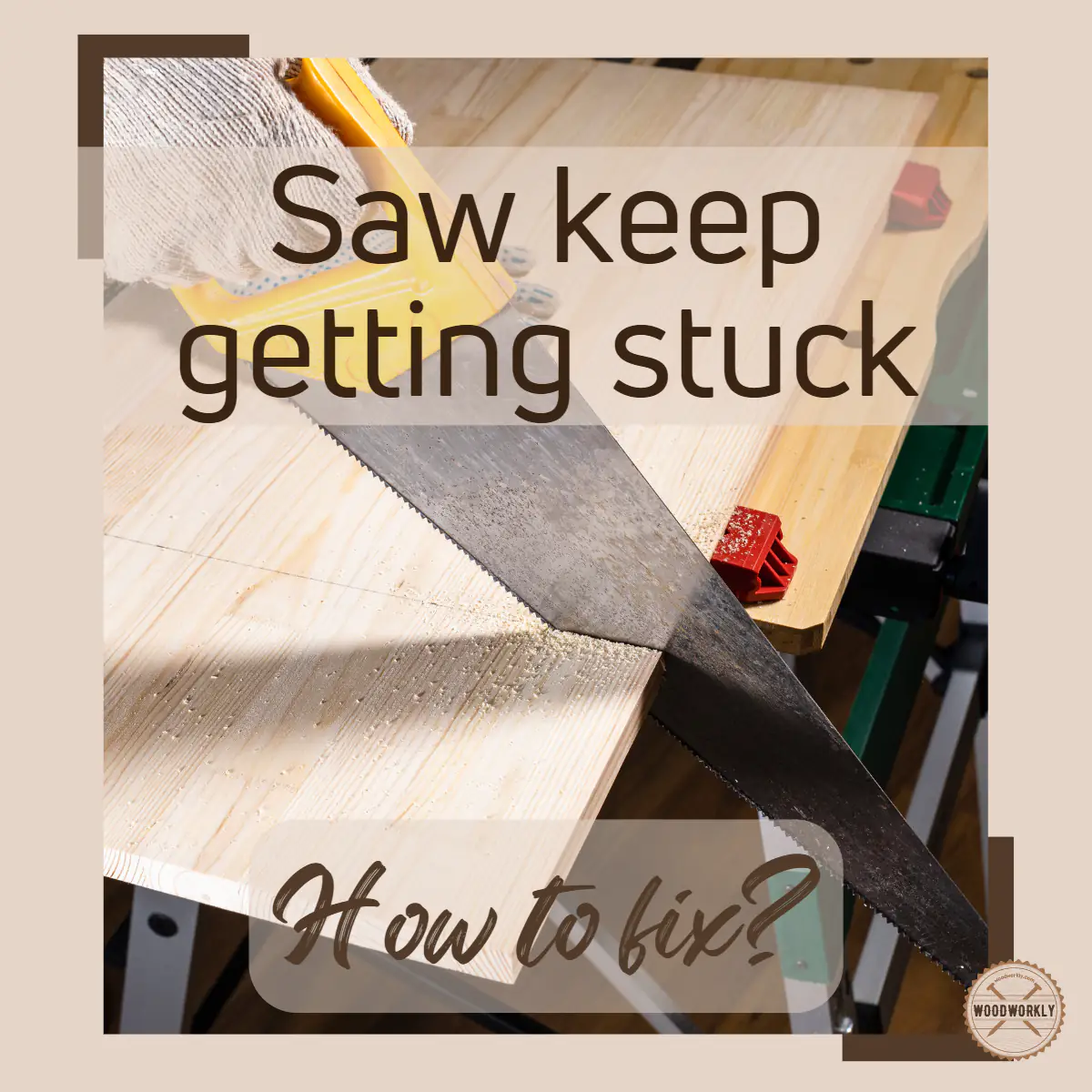
The saw is one of the basic woodworking tools that use to cut wood into different-shaped pieces.
There’re many different types of saws. Some are hand saws, and some are power saws.
In my early woodworking days, when I was working with my handsaw, it sticks continuously causing damage to my woodworking projects.
I was curious about this issue and did a deep research about it. Finally, I was able to fix it with the help of professionals.
Now after all these years, here’s what I know about, How to stop saw from sticking?
To stop a saw from sticking, ensure the blade is sharp and clean, the motor is well-maintained, and the cut is straight. Regularly grease the motor, check blade depth, and only cut materials suitable for your saw. Replace the blade if it’s damaged or overly dull.
But that’s just a quick snapshot of the question.

So, in this article we’ll explore all the aspects of how to stop saw from sticking, why does saw keep getting stuck and how to stop that!
Furthermore, I’ll answer some frequently asked questions as well.
Let’s dig in!
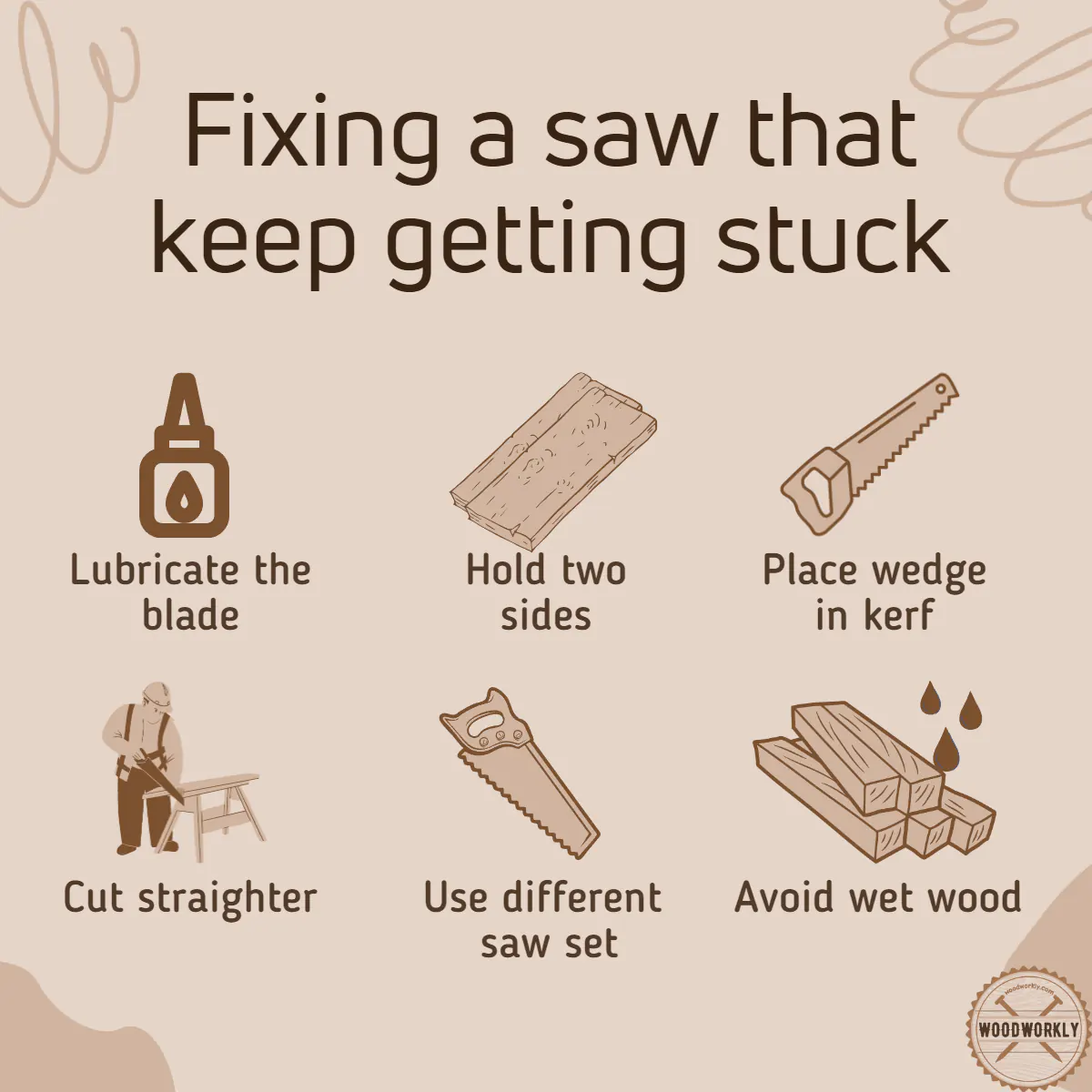
Why Does Saw Keep Getting Stuck?
Sticking a saw while working on a clean finish is a nightmare for any woodworker. Several reasons cause saw keep getting stuck.
Some of them happen due to user’s mistakes and others happen due to tool failures.
Here’re the main reasons that cause the saw to keep getting stuck.
- The Cut isn’t straight
- When the wood is closing the kerf opening and pinching the saw blade
- Push saw through wood with excess force
- Push saw through wood quickly
- Bending the saw blade during the work
- The saw teeth set isn’t large enough to make space for the saw to pass through without friction
- Saw teeth are too fine
- Sawing wet wood
Because of the above reasons, it’s so hard to make a clean cut without the saw getting stuck.
Saw teeth set have a responsibility to make the kef opening wider to give enough space for the saw to pass through without friction.
Because once the friction works against the saw blade, it’ll tend to bend, and the cut won’t be straight anymore, and it’ll get stuck eventually.
Now you have a clear idea about why does saw keeps getting stuck. So, let’s focus on how to stop the saw from getting stuck.
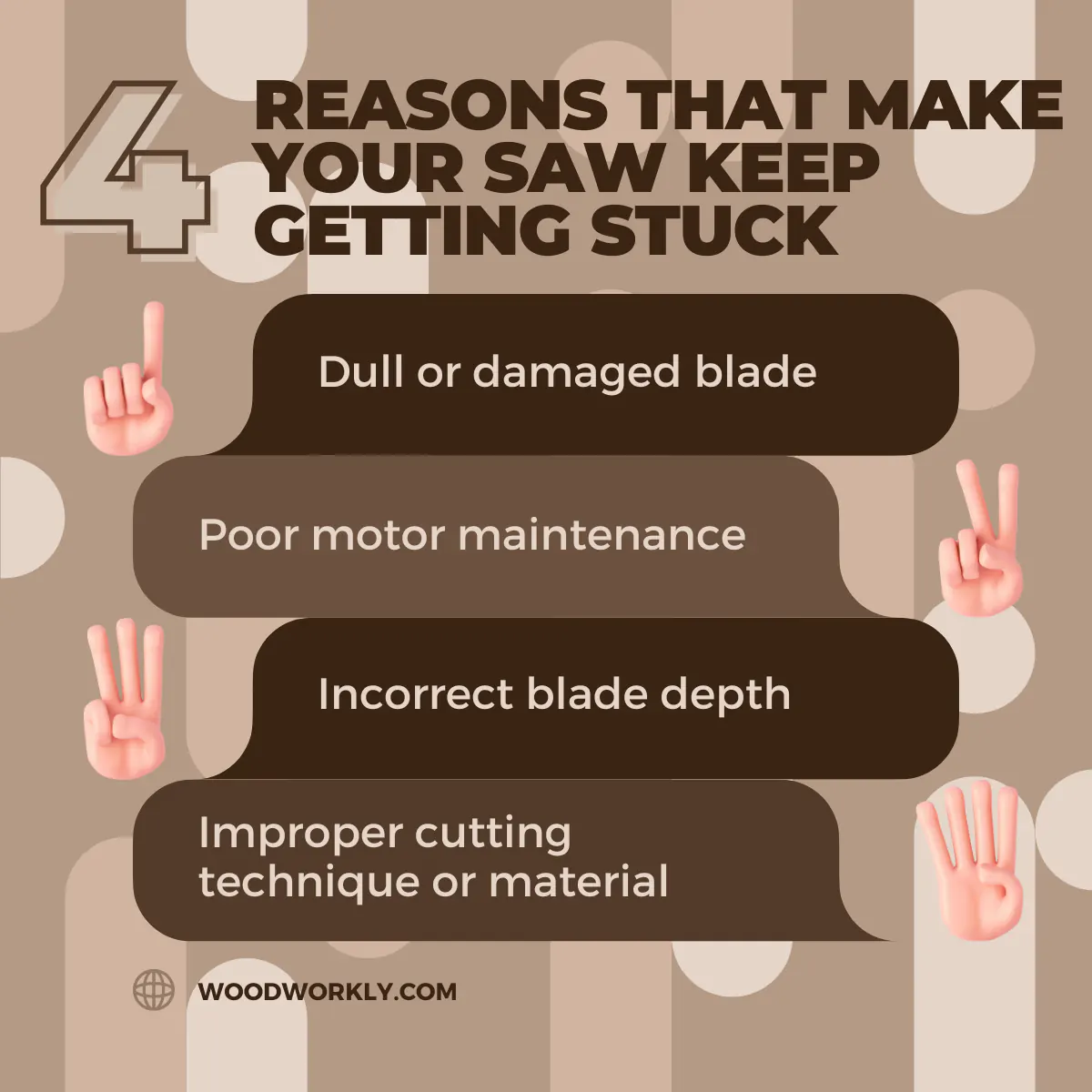
How to Stop Saw from Sticking?
There’re several ways you can stop a saw from sticking. Most of them are simple pre-preparations that everyone could follow.
Here’re some best methods to stop the saw from sticking,
- Lubricate the saw blade before work
- Hold two sides of the wood
- Place the wedge in the kerf
- Cut straighter
- Use different saw set
- Replace the saw
- Avoid sawing wet woods
- Sharpen the saw
Most of the methods listed above are simple and can give a try even if you’re a beginner in woodworking.
Read to know, Beginner woodworking hand tools, the ultimate guide!
In my opinion, every woodworker should know saw use and maintenance techniques that can apply to various woodworking projects.
So, let’s discuss each of the above methods separately to get a clear idea about how to stop the saw from sticking.
1. Lubricate the Saw Blade Before Work
Lubricate the saw blade with paste wax, beeswax, or tool oil before you start the work. Wax-coated blades slide across wood pieces smoothly when making cuts.
Wipe a light coat of wax or tool oil all over the blade without missing any spots. Especially cover the areas that directly touch the wood while you are making cuts.
Then wait for about 10 – 15 minutes for the drying process of paste wax. Once the surface is dried completely use tint-free, clean, soft cloth and buff it out with circular motions.
Now your saw blade is fresh as new. It can pass through any kind of wood without building up unnecessary friction.
This will prevent the saw from getting stuck and able to make a nice and clean cut easily.
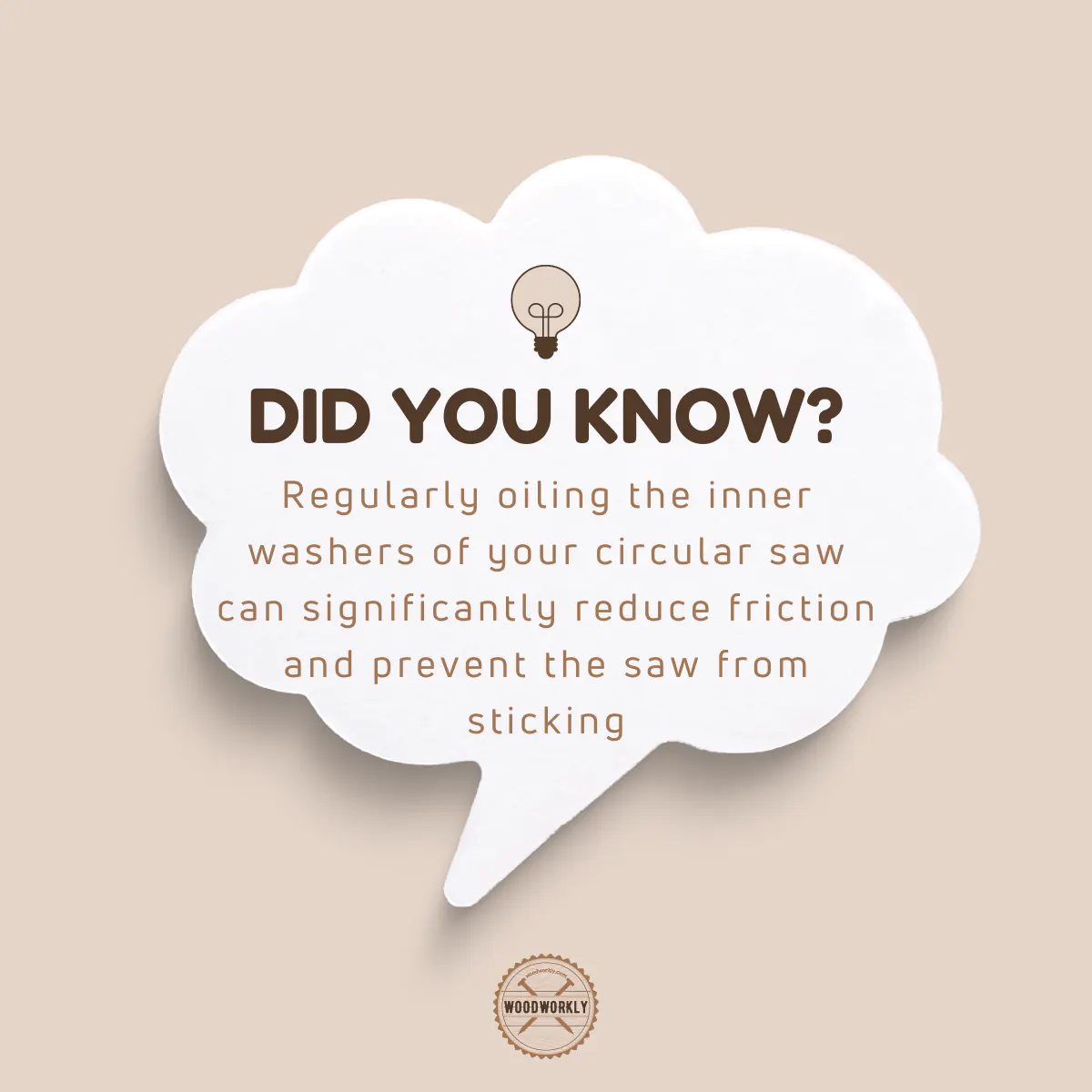
2. Hold Two Sides of the Wood
Hold two sides of the wood with the other hand that cut apart to prevent the saw from sticking. This stops the saw blade from getting stressed due to friction and makes the cutting process easier.
When the saw blade doesn’t stress from two sides of the wood, it’ll smoothly go through the wood fibers and make the cut nice and straight.
This will give better control of the saw and make sure to keep your hands away from the saw blade. Not along the cutting line of the saw.
Hold the wood piece firmly and flat on the surface to prevent them from moving and turning and drawing your fingers against the surface.
3. Place Wedge in The Kerf
In order to stop saw from sticking place a wedge in the kerf opening. This will prevent the saw blade from getting stressed by squeezing between wood pieces.
Placing a wedge in the kerf opening will prevent the wood from pushing and forcing against the saw.
Wedges help you to force the wood open and complete the cut. Because some woods have high internal pressure makes it is really difficult to pass a saw blade through wood fibers.
Wedge is useful to create an open pathway for the saw to cut through without getting any disturbances.
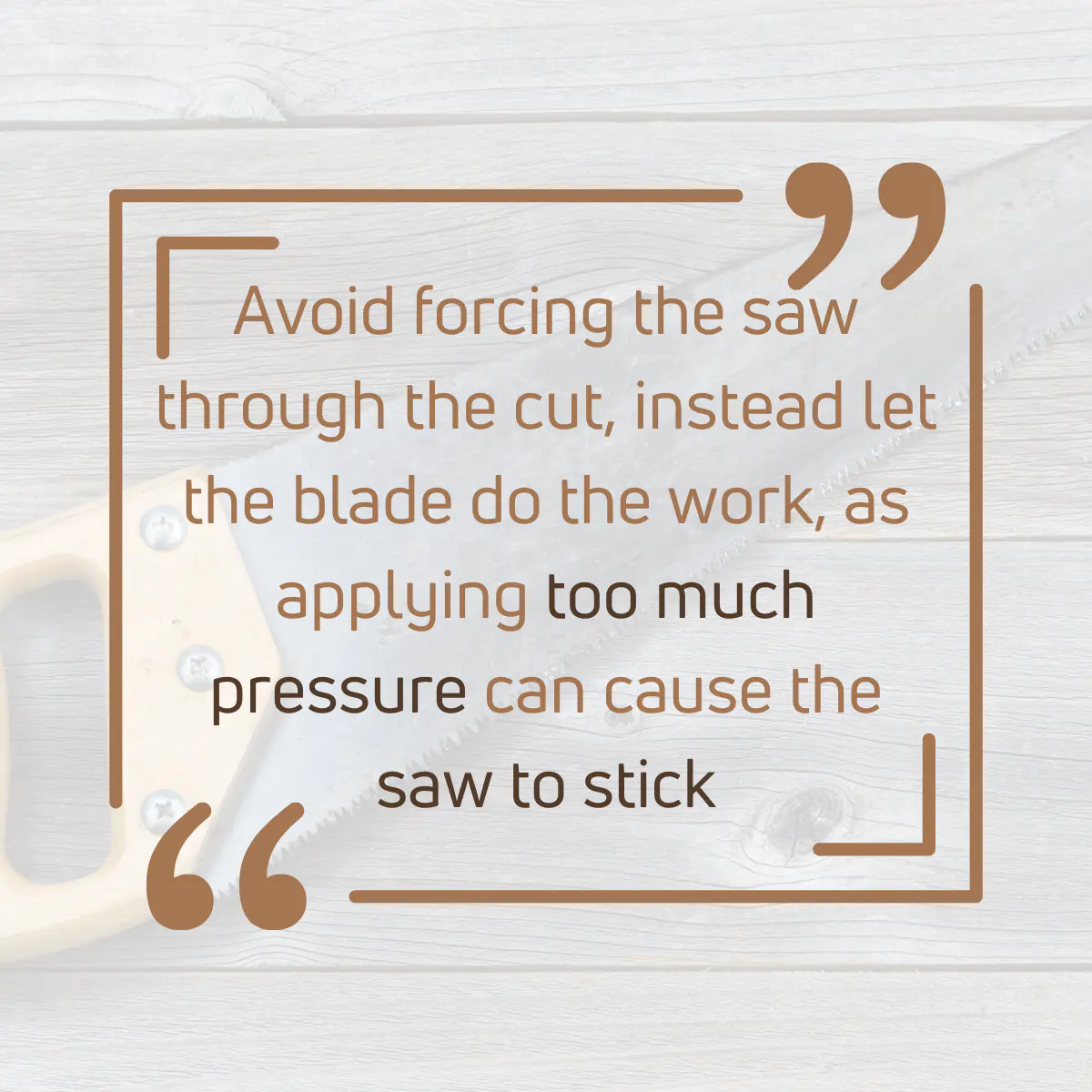
4. Cut Straighter
Cut straighter to stop saw from sticking. When the cut isn’t straight the saw tends to stick due to the high friction between the blade and wood.
You cannot make the straight cut if the saw blades and dull and uneven.
Therefore, better to check your saw blade before cutting, because even though you’re trying to cut straight the saw blade may prevent that due to mechanical failures.
5. Use Different Saw Set
If your saw stick when sawing the wood, try to use a different saw set and give it a try. Because saw set increases the number of teeth amount of the saw and helps to make a clean cut with ease.
Most saw sets that you purchase from local hardware have induction hardened teeth. Those teeth don’t bend like regular saw teeth.
Therefore, they may snap off during the process.
If you live in a hot area with a high room temperature level, I don’t recommend using saw teeth to stop the saw from sticking because some saw sets tend to be blue because of temperature by changing their metal structure.
This issue is so rare to find unless you live in a very hot climate.
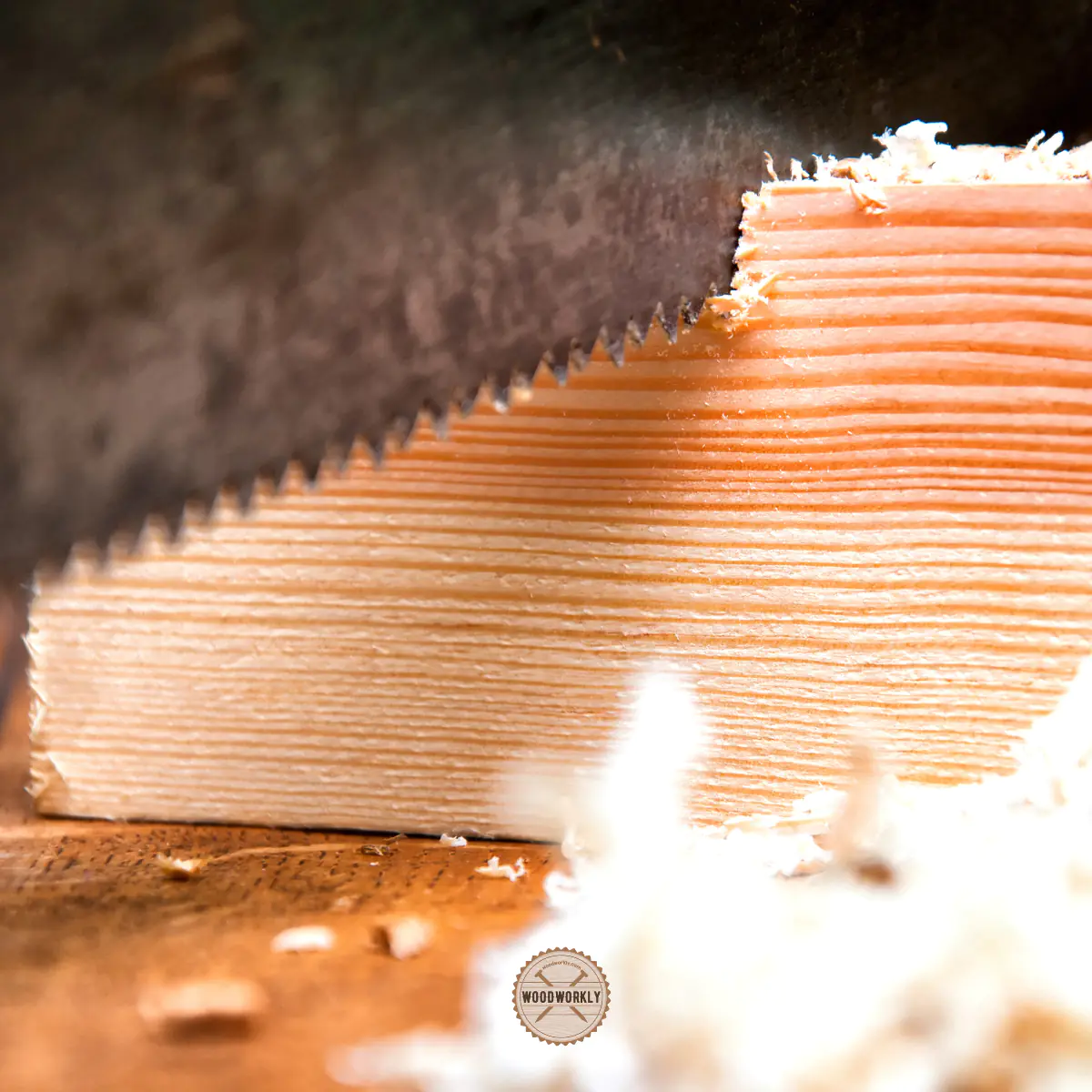
6. Replace The Saw
If none of the above methods is working and your saw is keep sticking better to replace it with a new saw.
Make sure to buy a saw with finer and coarser teeth.
The saw blade should be well sharpened. Plus, make sure the saw blade saw set is the incorrect size.
There’re two types of saw teeth,
- Rip saw teeth – Rip saw teeth are used to cut along the wood grain. Teeth push along the wood like a chisel.
- Cross-cut saw teeth – this is used to cut across the wood grain. It cuts wood like a knife blade.
So, make sure to get the right type of saw for your project. because the right fresh saw will not stick when cutting.
7. Avoid Sawing Wet Woods
Sawing wet can cause saw sticking. Even though the saw is well prepared with a suitable saw set, sharpens the blade, and followed the right angle when cutting, wet wood can always be trouble.
Wet woods are filled with moisture content.
Because of having high water content, the wood is already expanded, and it’ll eventually contract when drying.
When it is drying and contracting while you’re sawing, the saw will stick between the wood.
Plus, saw teeth chew up the wood when it’s wet. This will damage and crack the wood. As a result of chewing up the wood, the saw will stuck and won’t give a clean cut.
Wet wood can dull the saw blade and weaken its functionalities. Therefore, never use wet wood for sawing.
8. Sharpen The Saw
Sharpened saws clean up saw teeth and you’ll be able to make nice and clean cuts with it without sticking the saw.
But sharpening a saw is a little bit tricky especially if you’re a beginner in woodworking. Because you need a small diamond or triangular file that perfectly matches your saw teeth.
Then stroke saw teeth against the diamond or triangular file to remove the saw teeth’ dullness and sharpen them crystal clear.
If you’re a beginner in woodworking, better to buy a new saw rather than spend time sharpening the saw because it takes a lot of time and practice to sharpen the saw blade.
That’s it, folks!
Now you have a clear idea about how to stop saw from sticking with 8 proven methods.
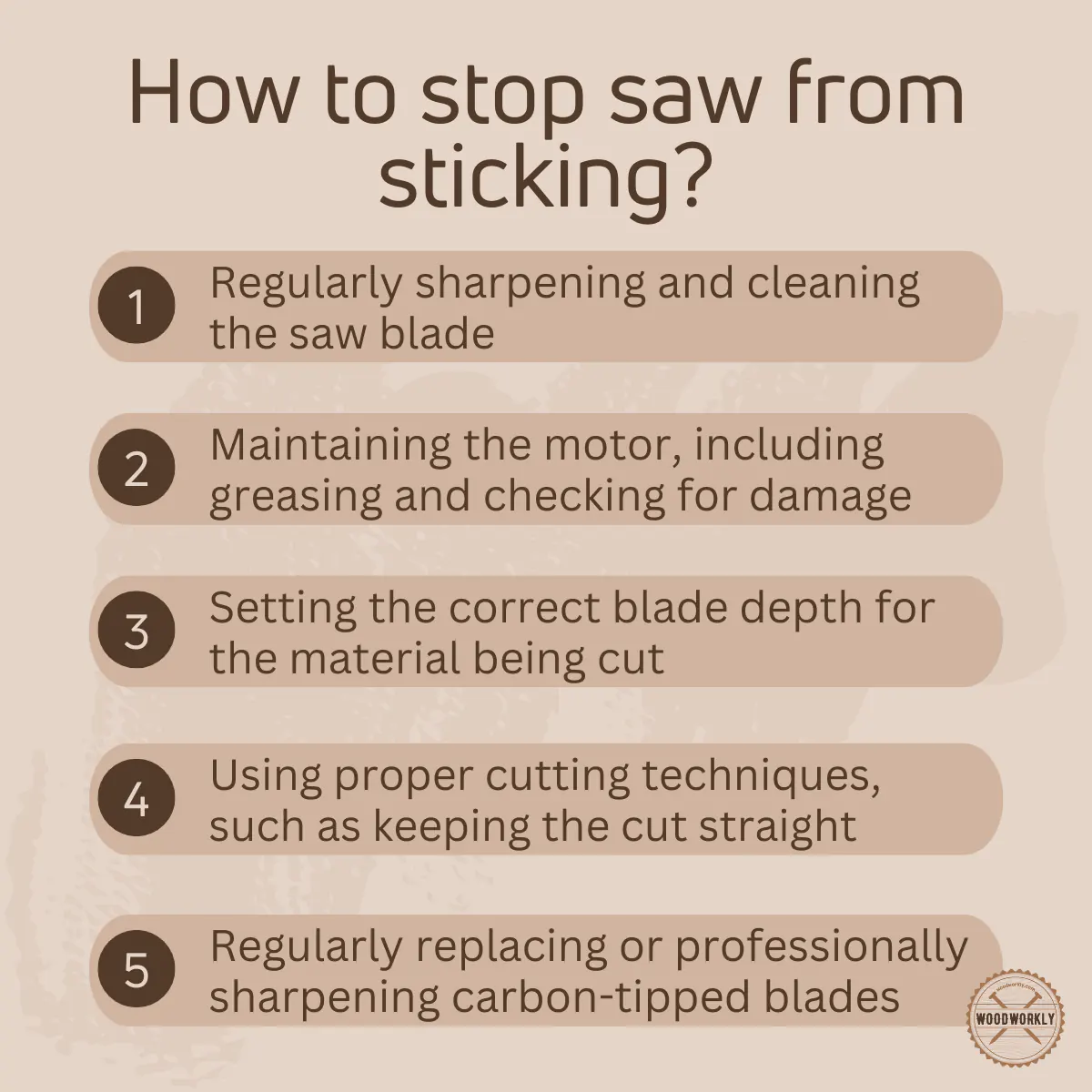
How Do You Unstick a Saw Blade?
If the blade is already sticking between woods, unstick using the following steps,
- Lay down the saw on the worktable.
- Pull the saw the same as you pulled down the saw by letting saw teeth bite the wood.
- Put a wrench on the arbor nut at a 90-degree angle and hold the saw with one hand and hammer down striking the bow on the wrench with the other hand.
- If the wrench falls off, place it again and try to hammer it down again.
- Place the saw with the blade that faces up.
- Remove the arbor nut
- Tape the blade again and again until it loosens up and lift off the blade when it’s free.
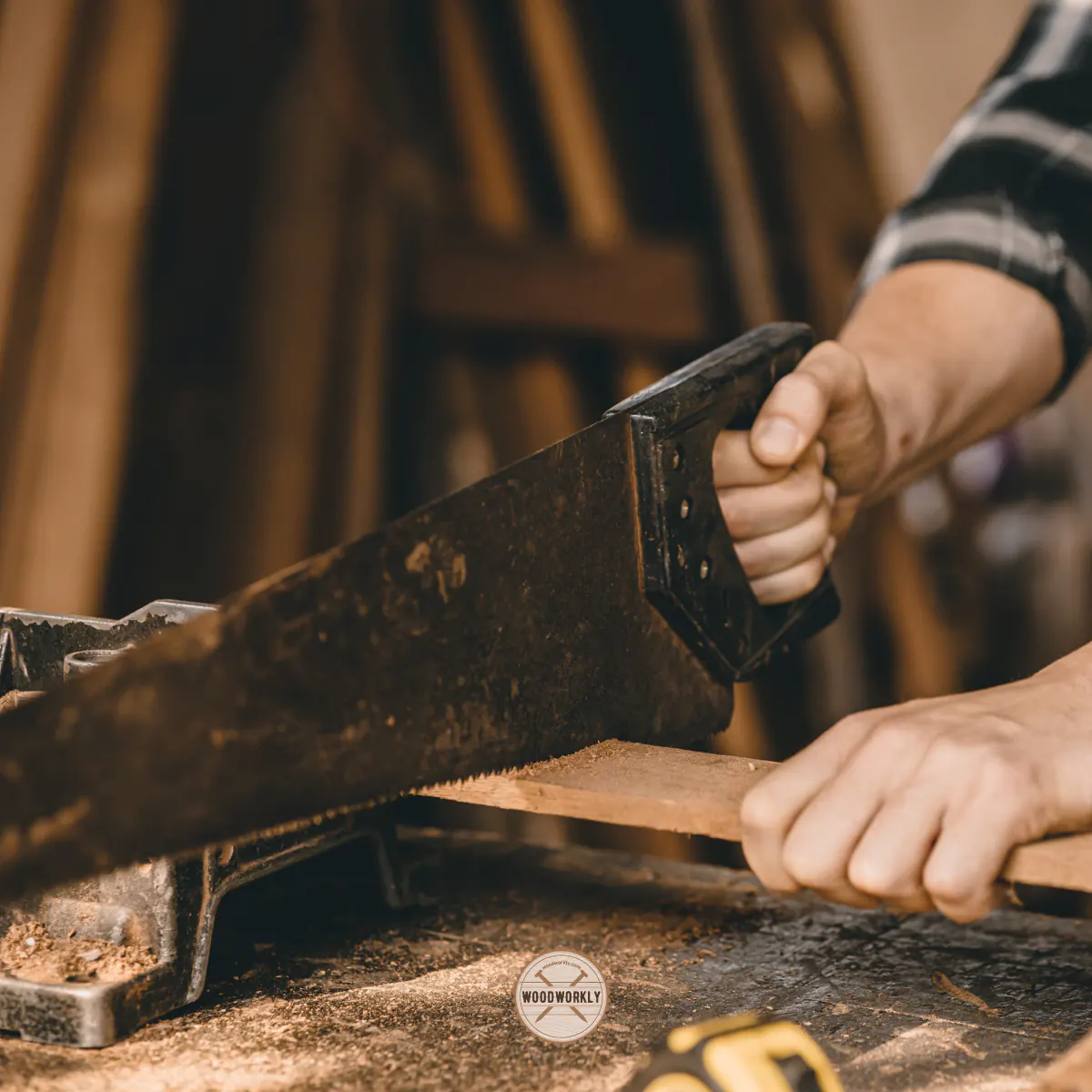
How To Keep Chainsaw from Sticking?
To keep the chainsaw from sticking, place a flat screwdriver between the wood pieces and widen the groove.
If you cannot lift the log, better to cut on top of the wood that is one-third of the wood diameter and cut from the underside using the chainsaw.
This will keep the chainsaw from sticking.
How To Lubricate A Saw?
To lubricate a saw, Take a lint-free, soft cloth and wipe a light coat of paste wax or tool oil all over the blade without missing any spots.
Especially cover the areas that directly touch the wood while you are making cuts.
Then wait for about 15 minutes for the drying process of paste wax.
Once the surface is dried completely use tint-free, clean, soft cloth and buff it out with circular motions.
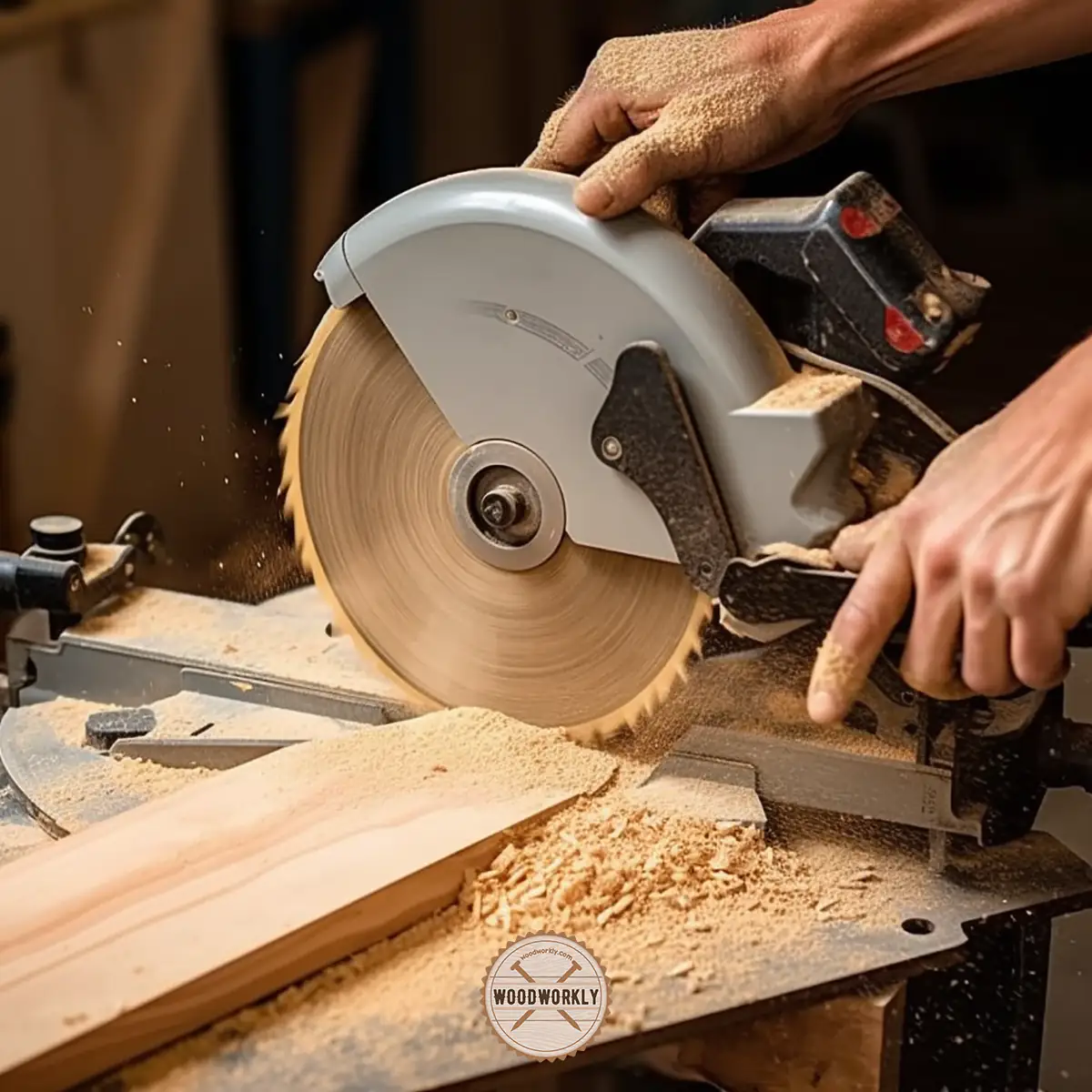
Why Does My Circular Saw Keep Stopping?
Experiencing your circular saw abruptly stop mid-cut can be both frustrating and hazardous.
This issue usually stems from a couple of common factors that we’ll dive into, along with ways you can prevent it from happening.
A Dull or Damaged Blade
Arguably, the most common cause of your circular saw stopping is the blade.
Just as a dull knife struggles to slice through a ripe tomato, a saw with a dull blade will have a hard time cutting through wood or other materials.
Moreover, if the blade is damaged or warped, it may create more resistance leading to inefficient cutting and eventually causing the saw to stop.
The solution lies in regular maintenance.
Keep the blade clean by wiping off resin, sap, and other debris that can accumulate over time.
If the blade is dull, you can use a file to sharpen it at home.
However, for carbide-tipped blades, professional sharpening is recommended.
Sometimes, it might be more cost-effective to simply replace a severely damaged or worn blade with a new one.
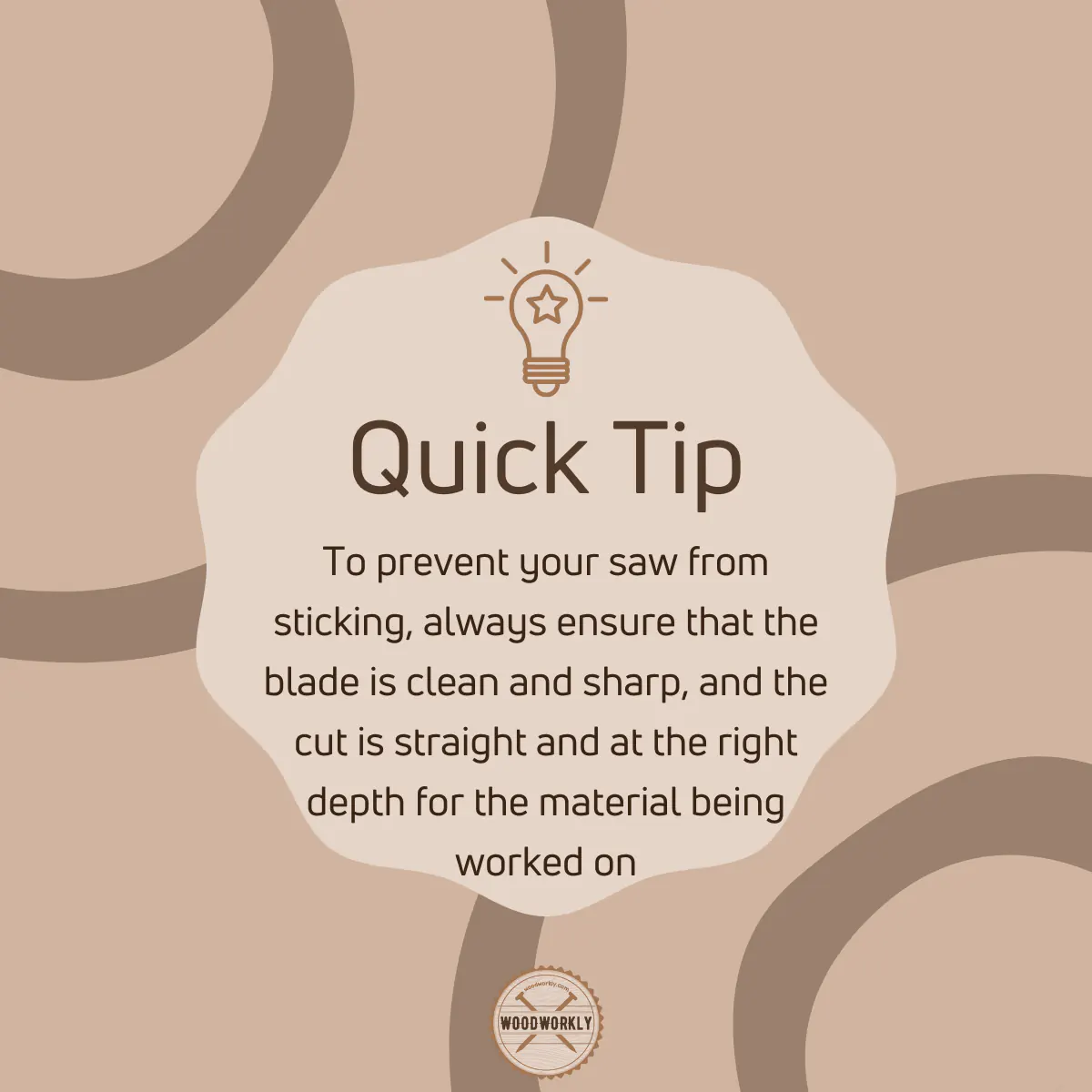
Motor Issues
Another common culprit is the saw’s motor.
If the motor isn’t functioning properly, it may not be able to deliver the power needed to keep the saw running.
Over time, parts like the motor brass can get damaged or the motor grease can harden, affecting the saw’s operation.
Maintain your saw’s motor by regularly checking the brass for any signs of damage.
If you find any, it’s usually best to replace the brass.
Lubricating the motor with fresh grease at least once a year can prevent hardening and keep your saw running smoothly.
And don’t forget the arbor, which holds the blade – ensure it’s always clean and tightly secured.
Inappropriate Blade Setting or Cutting Technique
If the blade depth is not set correctly, or if you’re not moving the saw in a straight line, your saw could stop.
Ideally, the blade should be set about a 1/4 inch deeper than the thickness of the material you’re cutting.
If too much blade is exposed, it could get stuck in the material.
Keeping the cut straight is crucial, too. Veering or angling from a straight line can cause the blade to pinch in the kerf (the cut created in the material), which may stop the blade.
Overloading the Saw
Lastly, remember that your saw has its limits.
Forcing it to cut a material it was not designed to handle, or cutting something too thick for its power level, can cause your circular saw to stop or even damage the motor.
Always consult the manufacturer’s manual to understand your saw’s capabilities and limitations.
It’s essential to use the correct type and size of blade for the material you’re cutting.
As you can see, keeping your circular saw from stopping is primarily a matter of proper use and regular maintenance.
Just like a car, your saw needs consistent care to deliver peak performance and ensure a long lifespan.
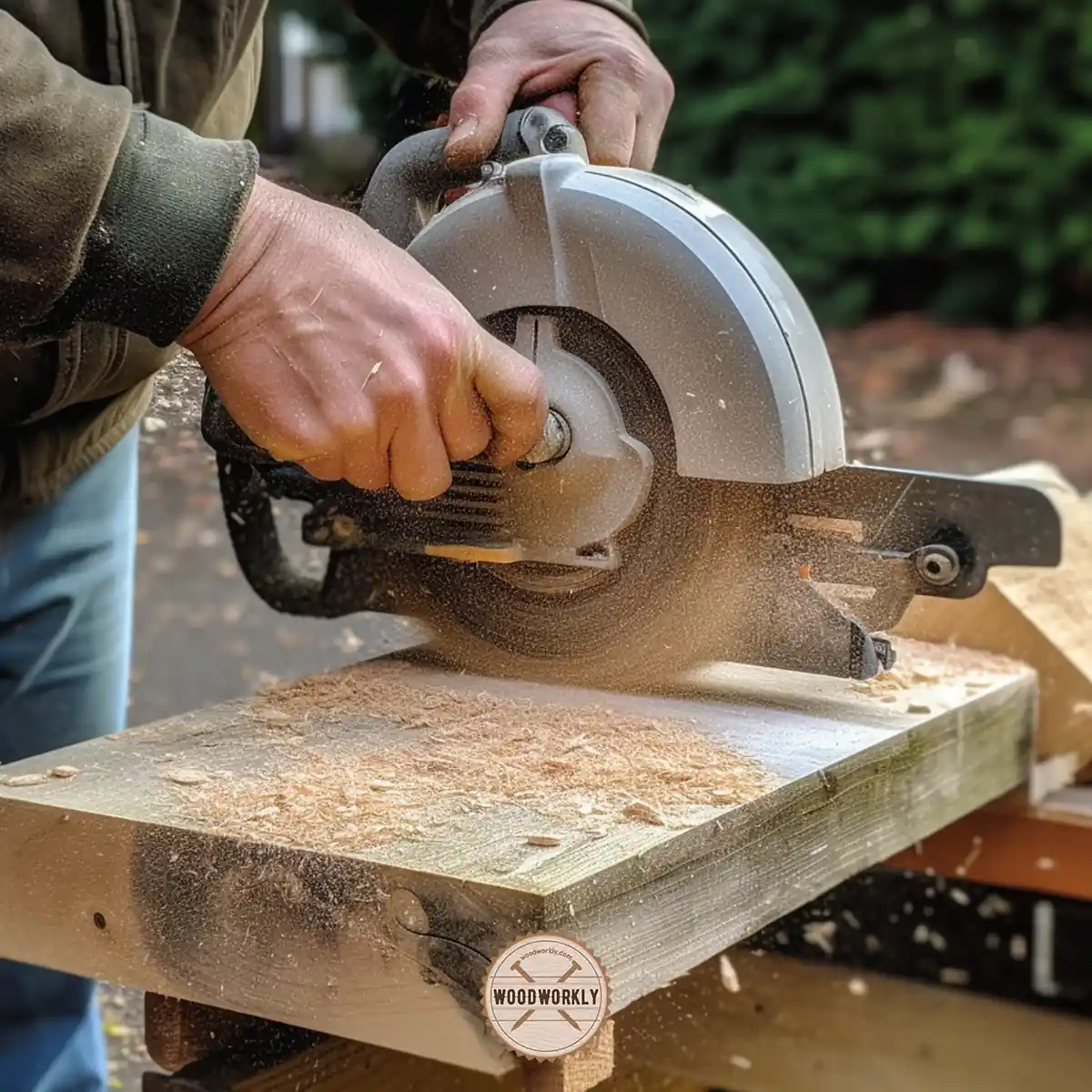
Hope you’ve learned all you wanted to know about, how to stop saw from sticky with tips and tricks.
So, let’s answer some frequently asked questions.
FAQs
Why does my saw keep stopping mid-cut?
Your saw may stop mid-cut due to a dull or damaged blade, motor issues, incorrect blade depth, or improper cutting technique. Regular maintenance and correct use can prevent this issue.
How can I prevent my saw from sticking?
To prevent your saw from sticking, keep the blade sharp and clean, maintain the motor, ensure correct blade depth, and use proper cutting techniques.
Does a circular saw need oil?
Yes, occasionally oiling your circular saw, particularly the inner washers, after cleaning can help keep it in good working condition and prevent sticking.
Can the material I’m cutting cause my saw to stick?
Yes, forcing your saw to cut a material it’s not designed to handle or something too thick for its power level can cause sticking.
How often should I replace my saw blade?
There’s no fixed schedule for replacing saw blades. Instead, it depends on usage, the materials you’re cutting, and blade care. Replace it if it’s damaged or overly dull.
Can a frayed cord cause my saw to stop?
Yes, a frayed cord or weak battery (in cordless saws) can impact the power supply, causing your saw to stop.
Does the speed at which I cut affect the sticking of the saw?
Yes, forcing the saw to cut too quickly or at an inconsistent speed can increase the likelihood of the saw sticking.
How can I avoid kickback from my circular saw?
To avoid kickback, keep your blade sharp, don’t force it through the cut, and ensure the wood does not pinch the blade.
What type of blade should I use to prevent my saw from sticking?
The blade type should correspond to the material you’re cutting. Using the right blade can help reduce the risk of the saw sticking.
Why is blade sharpness important to stop the saw from sticking?
A sharp blade reduces the resistance when cutting, preventing the saw from sticking and ensuring cleaner cuts.
Did I cover all you wanted to know about: How To Stop Saw From Sticking?
In this article, I have deeply discussed how to stop saw from sticking by describing 8 different methods.
All the methods discussed throughout this article are 100% accurate and easy to use even if you’re a beginner.
Plus, I’ve talked about what are the reasons that cause saws to stick between woods.
You can stop saw from sticking by lubricating saw blade with beeswax or paste wax before cutting, holding two sides of the wood with the other hand that cut apart, placing a wedge to keep the kerf open, or by cutting straighter. Otherwise, use a saw with finer and coarser teeth to stop the saw from sticking.
Usually sawing wood is hard due to the strong bonds between wood fibers.
When you insert the saw blade into the wood, the wood fibers will block its pathway causing the saw blade to get stuck.
To prevent the saw from getting stuck, lubricate the saw blade before the job and make the cuts straighter.
Those are the best methods you can follow to stop the saw from sticking. Otherwise, better to replace the saw.
Furthermore, I have answered some frequently asked questions as well.
Hope you have got a pretty good knowledge about how to stop saw from sticking.
Make sure to try the things you have learned when you stuck your handsaw while working on a project in the future. Happy woodworking!